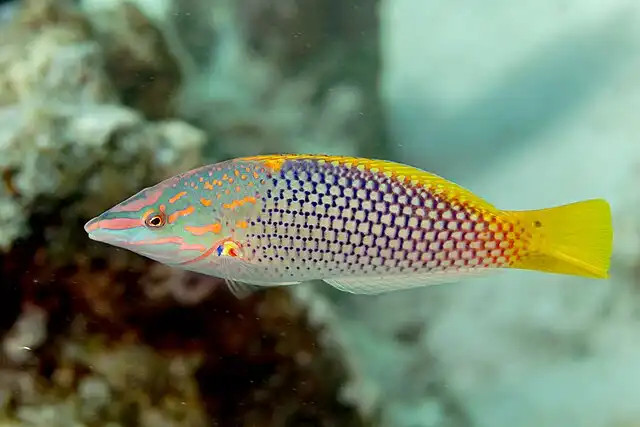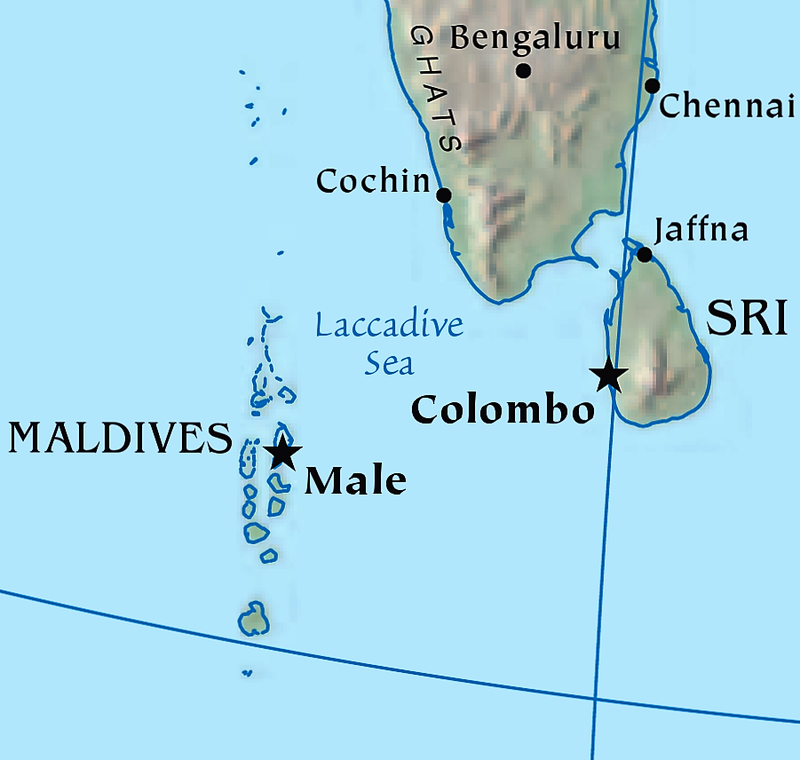Description

Disclaimer: Copyright infringement is not intended.
Context:
- Three fish species (Jansen’s wrasse, checkerboard wrasse, moon wrasse) in the Laccadive Sea, off the southwest Indian coast, were seen to exhibit tool-use capabilities.
Tool using fishes:
- Octopuses: These cephalopods are known for their exceptional problem-solving skills and tool use.
- They have been observed using coconut shells and other objects for shelter, dragging around discarded shells for protection, and even dismantling and reassembling equipment in aquariums.
- Dolphins: Some dolphin species use marine sponges to protect their rostrums (snouts) while foraging on the seafloor.
- This behavior, known as "sponging," is a form of tool use unique to certain populations of dolphins.
- Tuskfish (Choerodon schoenleinii): Tuskfish has been observed using rocks as tools to open clams and other shellfish. They select suitable rocks, grasp them with their mouths, and then smash them against the shells of their prey to access the soft flesh inside.
- Blackspot Tuskfish (Choerodon schoenleinii): Similar to the tuskfish, the blackspot tuskfish has also been documented using rocks as tools to open shellfish. This behavior demonstrates the ability of certain fish species to learn and adapt to their environment to obtain food.
The Laccadive Sea details
- Location: The Laccadive Sea is situated in the northeastern part of the Indian Ocean, bounded by the southwestern coast of India to the east, the Maldives to the west, and Sri Lanka to the north.
- Geography: It covers an area of approximately 786,000 square kilometers and is characterized by numerous coral atolls, islands, and underwater features, including submerged banks and reefs.
- Islands: The sea is dotted with several islands, including the Laccadive Islands (Lakshadweep), Minicoy, and the Maldives archipelago, which are known for their pristine beaches, rich marine biodiversity, and vibrant coral reefs.
- Marine Biodiversity: The Laccadive Sea is renowned for its diverse marine life, including coral reefs, fish species, marine mammals, and sea turtles. It supports a wide range of ecosystems, from shallow coastal waters to deep-sea habitats, making it a hotspot for biodiversity.
- Economic Importance: The sea plays a crucial role in the economies of the surrounding countries, particularly India and the Maldives, by supporting industries such as fishing, tourism, and maritime trade. It is also rich in mineral resources such as oil and natural gas, although extraction activities are limited.
- Environmental Threats: Like many marine ecosystems, the Laccadive Sea faces threats from human activities such as overfishing, pollution, habitat destruction, and climate change. These factors endanger the health of coral reefs and marine biodiversity, impacting the livelihoods of coastal communities and the sustainability of marine resources.
- Strategic Importance: The sea serves as a strategic waterway for maritime trade and transportation, linking the Arabian Sea to the Bay of Bengal and providing access to major ports such as Kochi and Colombo. It is also of geopolitical significance due to its proximity to key shipping lanes and strategic chokepoints in the Indian Ocean.

Significance of Findings:
- The discovery of these fish using tools is significant, especially as it's the first documented instance of the moon wrasse using tools in the wild.
- Anvil use has only been observed in about 18 fish species worldwide, all from the Labridae family, to which the three newly discovered tool-using species belong. These findings shed light on the diversity of behaviors within this family of fish.
Source:
https://epaper.thehindu.com/ccidist-ws/th/th_international/issues/79596/OPS/GDFCMAS8H.1.png?cropFromPage=true
|
PRACTICE QUESTION
Q) Which of the following statements about tool-using fishes and the Laccadive Sea are correct?
1) The Laccadive Sea is bounded by the southwestern coast of India, the Maldives, and Sri Lanka.
2) Octopuses have been observed using coconut shells and other objects for shelter.
3) The Laccadive Sea covers an area of approximately 786,000 square kilometers and is known for its diverse marine life.
4) Dolphins use marine sponges to protect their rostrums while foraging on the seafloor.
5) Anvil use has been observed in more than 50 fish species worldwide.
Options:
A) 1,2, and 3 only
B) 1, 3, and 4 only
C) 2, 3, and 4 only
D) 1, 3 and 5 only
Explanation: B)
|













